

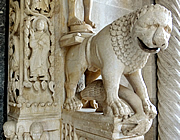
Croatia has some fine fortifications and Klis and the Walls of Ston are among the best. Tiny Trogir is a maze of narrow streets and medieval buildings, with the most beautiful carved 13th century cathedral portal.
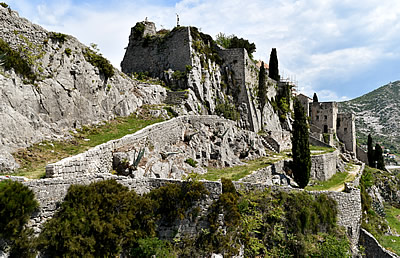
The magnificent fortress of Klis, familiar to Game of Thrones fans, stretches along a rocky ridge a few kilometres inland from Split.
It was the Romans who first fortified the strategic point, though the area had been inhabited from the 2nd century BC by the Illyrian tribe of Delmati. It was taken over by the Croats but by the end of the 11th century Hungaro-Croats were in charge. It withstood sieges and many attacks before succumbing to the Ottomans in 1537.
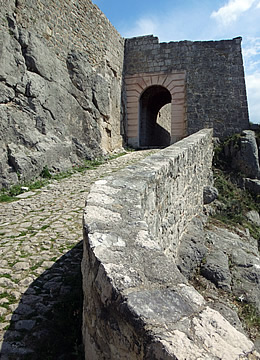
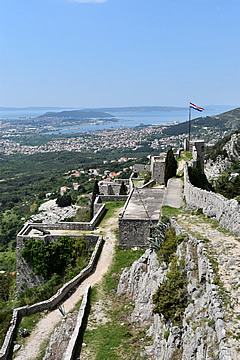
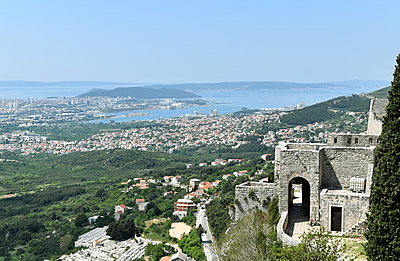
In 1648 the Venetians finally managed to dislodge the Turks and the fortress was restored and enlarged under their rule. Later it was ruled by the Austrians and the French.
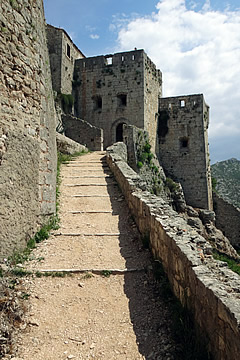
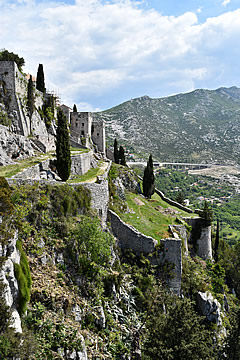
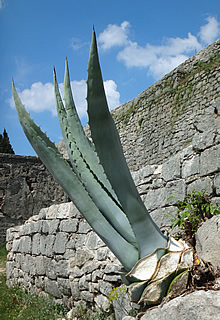
Today it is a very impressive ruin, with much remaining intact. The leaflet given to visitors is very informative.
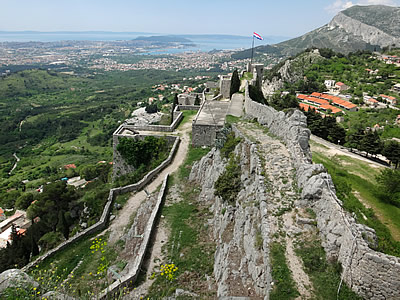
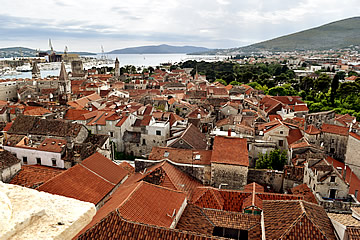
Founded by the Greeks in the third century BC, tiny Trogir, 25km west of Split, sits on an equally tiny island, connected to the mainland by a single short bridge, a longer bridge linking it to the island of Ciovo.
On arriving we got completely lost in the maze of narrow alleyways and had to enlist the help of a local to find our hotel, the Trogas, tiny and rather cramped but we were only staying one night.
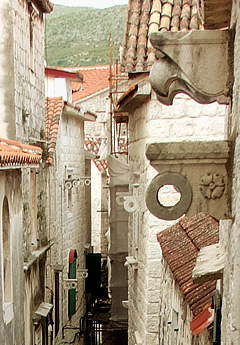
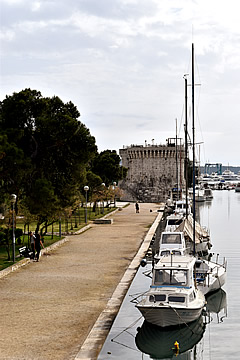
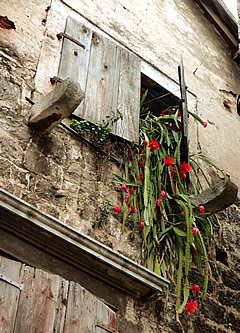
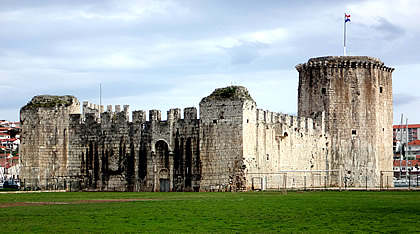
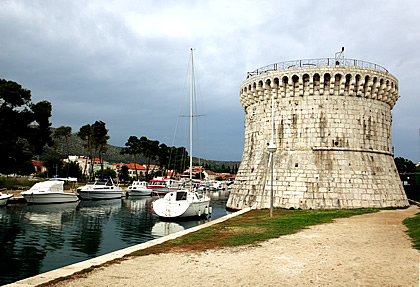
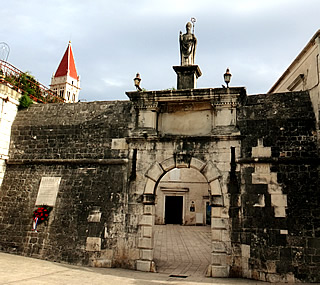
The jewel of the town is undoubtedly the central square with Romanesque St. Lawrence's Cathedral and the Renaissance loggia. Excellent view over the town from the cathedral bell tower.
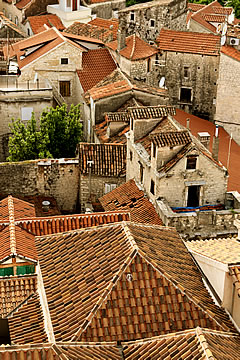
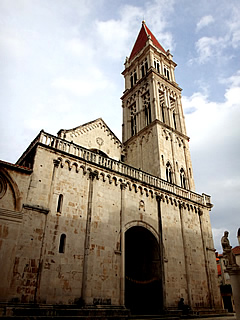
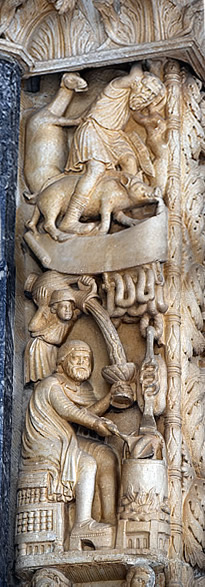
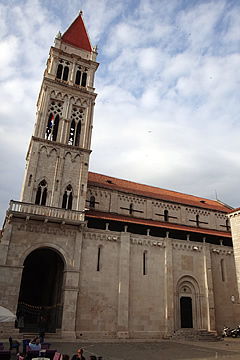
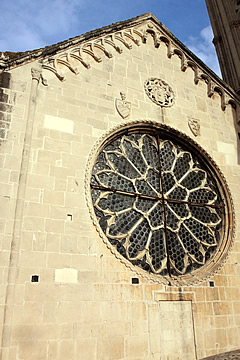
No question that my favourite bit of Trogir was the west portal of the cathedral. Created in 1240 by the Slav master-mason Radovan the doorway is carved with figures from the Old Testament, people at work, animals and mythical beasts - a real masterpiece.
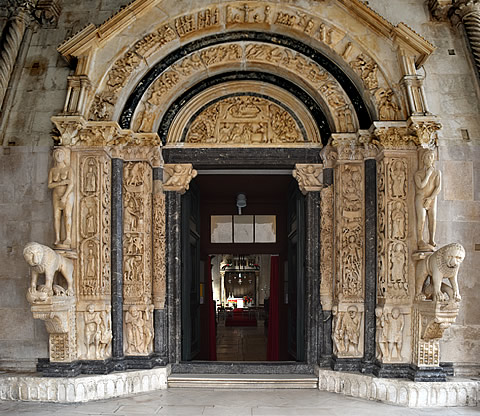
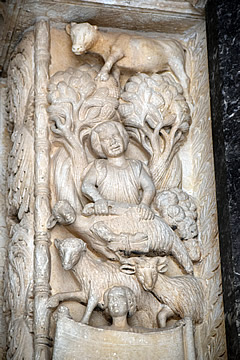
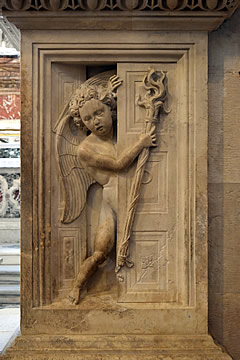
Inside the cathedral is the flamboyant chapel of St. John of Trogir. The barrel-vaulted ceiling in particular is worth a look: it is covered with the carved heads of angels surrounding a bust of God the Creator looking down.
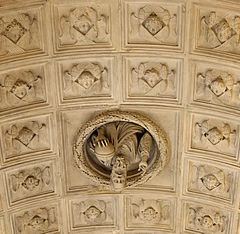
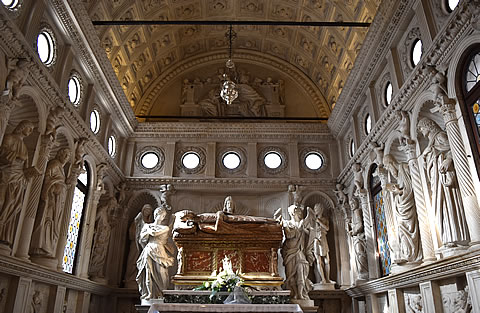
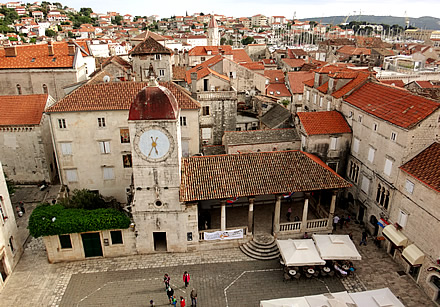
At ground level, the rows of cherubs in doorways represent the passage from life to death.
Also on the main square is the loggia, a fifteenth century covered platform, very shady in hot summers, with an impressive clock tower. The loggia was used for public gatherings and legal services were also performed here at specified times.
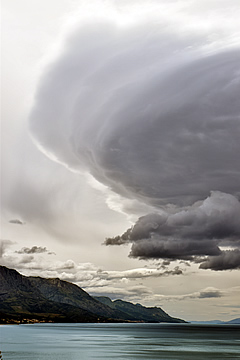
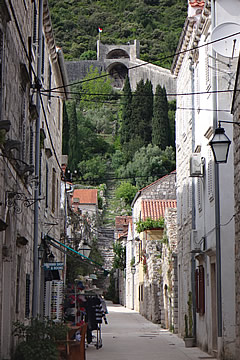
When we left Split to drive to Dubrovnik we asked the receptionist at the Hotel Slavija where we were staying if there was anything we should see on the way. She pulled out a sheet of paper with several interesting stops and lots of information. We decided to break our journey for lunch in Ston and see the famous town walls - "the longest complete fortress system around a town in Europe"! We were intrigued, as we have seen many, including Carcassonne in France and Avila in Spain.
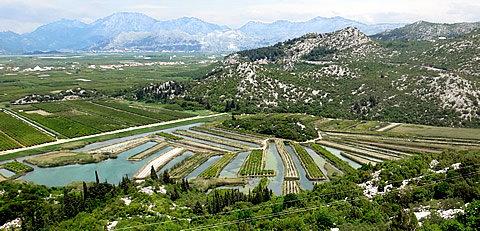
We passed through the fertile valley of the Neretva River, acres of orderly planted fields produce vast amounts of fruit and vegetables.
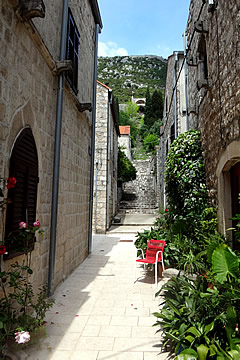
Soon afterwards we crossed the narrow stretch of land which is Bosnia-Herzegovina's access to the sea.
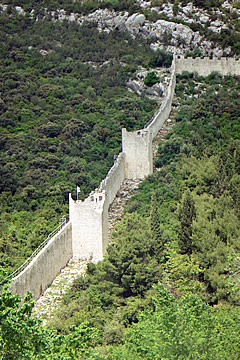

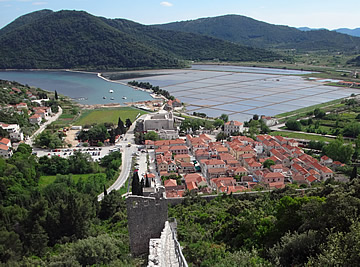
When we got there we found a truly immense length of wall connecting the villages of Ston and Mali Ston, 5 kilometres.
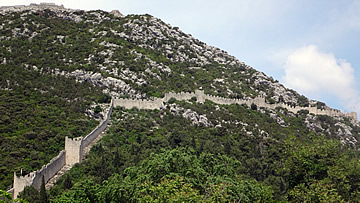
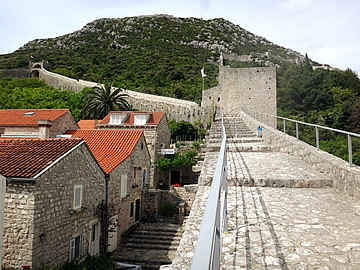
The wall was built to protect a very important commodity: salt. The area has long been a centre for salt production and the industry is still carried on today.
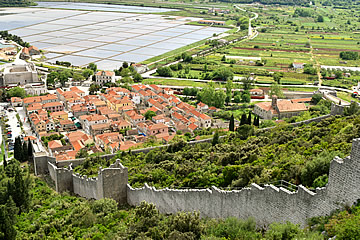
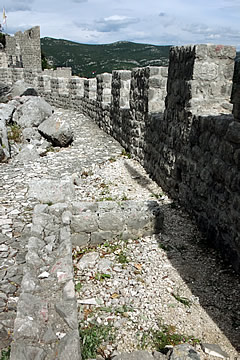
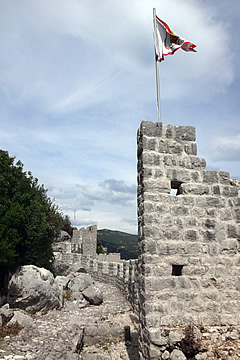
Before going up onto the wall we had lunch at Bakus in Ston - very popular with the locals. The area is renowned for its oysters - we had passed oyster beds on the way in, so I had a token oyster as an appetizer to try them and it was excellent, a mouthful of the sea (some might say why not just drink a glass of salty water but it's not the same!). Scampi, sea bass, chips and a chilled white wine followed by espressos set us up nicely for a walk along the impressive walls.
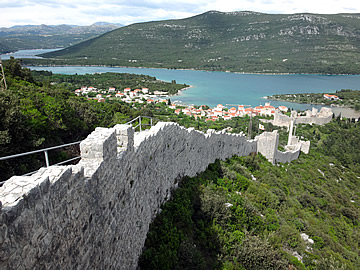
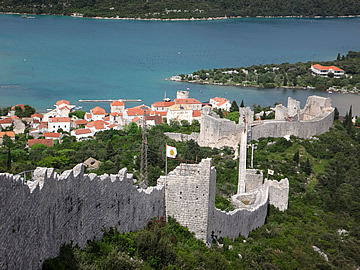
Mali Ston has a port and the fortifications include a tower and several arsenals